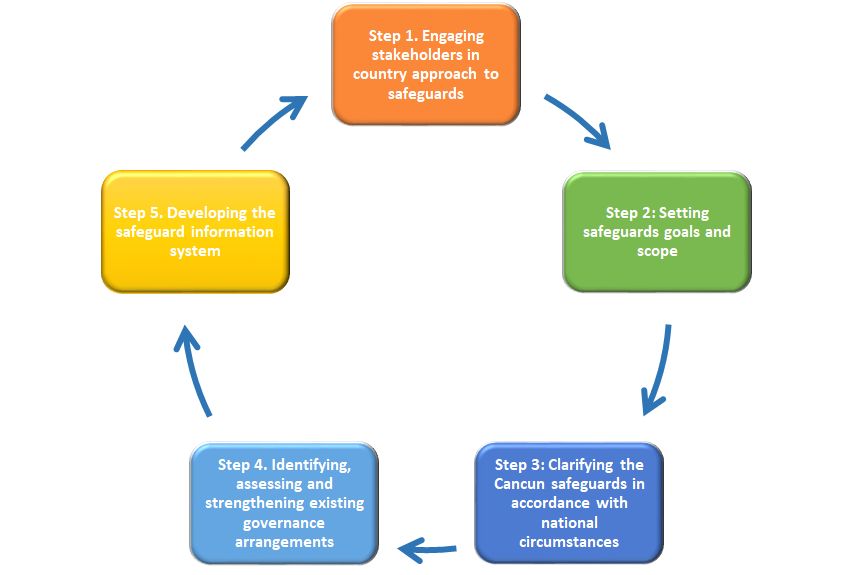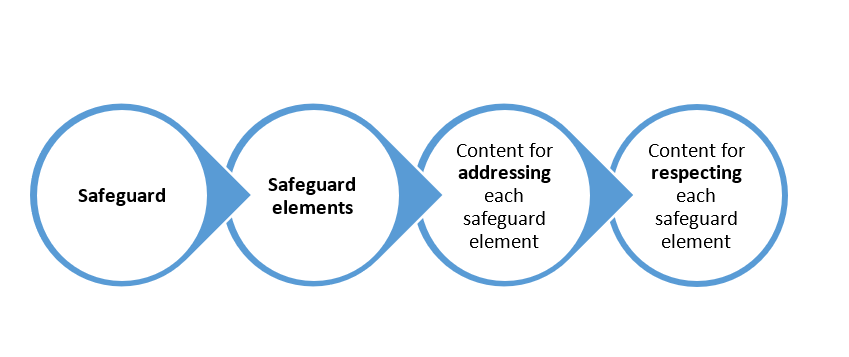About Safeguard Information System
About Viet Nam’s Safeguard Information System
REDD+ has been developed under the United Nations Framework Convention on Climate Change (UNFCCC) as an international payment mechanism that aims to provide results-based payments to developing countries for the successful implementation of measures which deliver GHG emission reductions through the reduction of Deforestation and Forest Degradation, Sustainable Management of Forest Resources, and Conservation and Enhancement of Forest Carbon Stocks. REDD+ as a concept has evolved over time and it is now widely acknowledged that in addition to climate change mitigation or the ‘carbon benefits’ it could present various a range of ‘multiple non-carbon co-benefits’. However REDD+ could also result in certain environmental and social risks.
In recognition that social and environmental risks associated with REDD+ must be addressed (REDD+ does no harm), and that multiple benefits are important (REDD+ does good), Parties to the UNFCCC agreed to a set of seven safeguards for REDD+ at COP 16 in Cancun 2010, referred to as the ‘Cancun safeguards’.
Viet Nam is adopting a country approach to the safeguards, a conceptual framework and coordinated processes undertaken to meet safeguard requirements for REDD+ under the UNFCCC, and other relevant initiatives and institutions. The country approach to the safeguards aims to ensure:
- REDD+ policies and measures are developed and implemented in a manner that is consistent with the safeguards (regardless of their type of funding source);
- A Safeguard Information System (SIS) is in place to provide information, accessible to all relevant stakeholders, on how the safeguards are being addressed and respected; and
- Summaries of information on safeguards are submitted periodically to the UNFCCC and other applicable donors or funders for REDD+.

Viet Nam’s safeguards approach has been developed with the engagement of stakeholders from government and non-government organisations (Step 1). Following the determination of the goals and scope of the safeguards approach (Step 2), a national clarification of the safeguards in accordance with Viet Nam’s national circumstances was developed (Step 3), based on a thorough assessment of governance arrangements, including safeguards relevant policies, laws and regulations (Step 4). Viet Nam’s SIS has been developed (Step 5) by drawing on the steps in the national approach to safeguards, including: the clarification of the Cancun safeguards, which forms the underlying structure of the SIS; the assessment of relevant policies, laws, regulations; and the further identification of information needs and existing information systems and sources relevant to the safeguards.
Objectives of Viet Nam's SIS
- 2016-2020: to meet UNFCCC safeguards reporting requirements and produce the summaries of information. It is also proposed that the SIS should gather and provide information on safeguards implementation for the proposed Forest Carbon Partnership Facility Emissions Reduction Programme, in the North Central Coast Region, during this period.
- After 2020: to support monitoring of priority activities in the forestry sector, such as Payments for Forest Environmental Services (PFES), and contributing to the enhancement of governance in the forestry sector, by supporting the monitoring of policy implementation, and law enforcement in the forestry sector.
Information in Viet Nam’s SIS
Viet Nam’s SIS provides information on how the safeguards are being addressed and respected. While there is no official definition of the terms ‘addressed’ and ‘respected’, Viet Nam applies these terms in its SIS in line with their generally understood meaning[1], as follows:
- Addressed: provision of information about the governance arrangements relevant to the safeguards, including policies, laws and regulations, institutions, grievance redress mechanisms, etc.; and
- Respected: provision of information about how these governance arrangements are working in practice, together with the resultant outcomes of their implementation.
For each safeguard, the SIS shows the Cancun safeguard principle, followed by Viet Nam’s specific safeguard elements. Under each element, a set of parameters show how that safeguard is being addressed and respected.

The information presented in Viet Nam’s SIS is drawn from a range of sources, including the national Forest Management Information System (FORMIS), the General Statistics Office, and the Committee on Ethnic Minority Affairs (CEMA). Information on how the safeguards are being addressed – the governance arrangements relevant to the safeguards - includes descriptions of relevant policies, laws, regulations and procedures. Information on how the safeguards are being respected includes descriptions and figures on how these policies, laws, regulations and procedures are working in practice, along with relevant outcomes of REDD+ implementation. Please see the sitemap for more detail on the SIS information structure. Information in Viet Nam’s SIS is updated regularly – usually on an annual or biannual basis, depending on the source of the information.
In the future, information in the SIS will be improved, with more data being sourced from other relevant databases and data sources, such as National Database on Biodiversity and National Database on Biodiversity and National Database on Preventing and Fighting Corruption (among a total of 12 databases, at various stages of development, have been identified as relevant to the SIS).
The SIS website and database are linked to Viet Nam’s national Forest Resource Management System (FRMS) and is managed by the Forest Protection Department of the Ministry of Agriculture and Rural Development (MARD). Information in the SIS is compiled and managed by agencies responsible for REDD+ under MARD, and analysed and reviewed by multiple stakeholders through the process of developing Summaries of Information on safeguards.
[1] In line with common good practice of other countries as informed by the findings of an expert workshop convened by the UNFCCC Subsidiary Body for Scientific and Technological Advice, held in October 2011.
